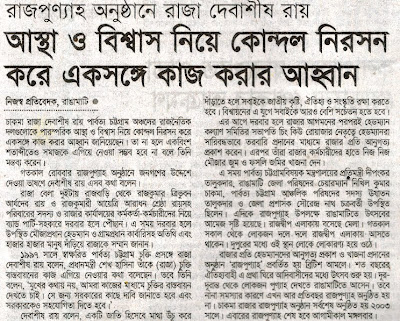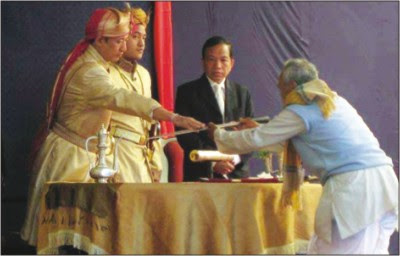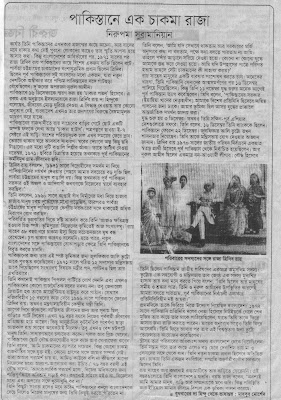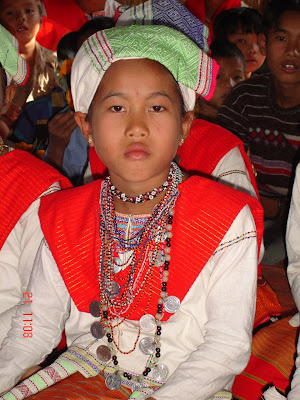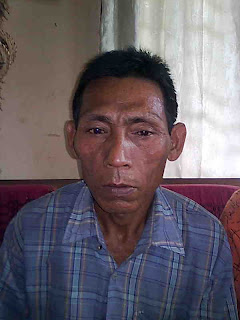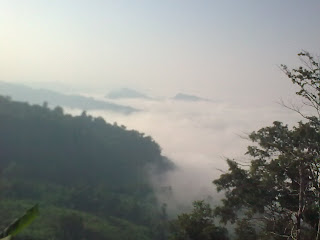Courtesy:

Wednesday, Dec 16, 2009, Opinion - News Analysis
http://www.hinduonnet.com/A CHAKMA IN PAKISTAN
Nirupama SubramanianCircumstances and history, says Raja Tridiv Roy, have played a great role in his life. He is virtually unknown to the present generation of Pakistanis, and a fading memory for those old enough to know. But in the aftermath of 1971, when Bangladesh came into existence, Raja Tridiv Roy was quite the toast of Pakistan.
Then the titular chief of the Chittagong Hill Tract Chakmas, Mr. Roy was just one of two East Pakistan parliamentarians — Noor-ul-Amin was the other — to reject the new country, and throw in their lot with West Pakistan.
On the eve of the December 16 anniversary of the “Fall of Dhaka”, as the event is remembered in Pakistan, Mr. Roy told The Hindu in Islamabad that he has no regrets about that life-changing decision as his people continue to be discriminated against by Bangladesh.
“Chakma House”, as the small unassuming plaque on the gate says, in the leafy E-7 sector, is Mr. Roy’s home in the Pakistani capital. The coat of arms on it has dulled with time. Inside, the living room is furnished simply, and of the few paintings that adorn the walls, two are by a Bengali painter dated November 1971 portraying idyllic scenes of rural life in what was then East Pakistan.
“One of the chief reasons in my decision to support the Pakistani nation rather than the rebels in 1971 was that the people of the Chittagong Hill Tracts are not Bengalis, but unfortunately, the government of East Pakistan at that time was exploiting the area and the indigenous population,” said Mr. Roy.
The peoples of the Chittagong Hill Tracts felt more secure with the Pakistan central government, he said, even though they held it responsible for the large scale suffering of tens of thousands in the area displaced in 1960 by the building of the Kaptai Dam.
Referring to a report earlier this year by the International CHT Commission, Mr. Roy said the 1997 peace treaty between the people of the region and the Bangladesh government had yet to be implemented in letter and spirit.
“The feeling of being exploited is even more acute now,” he said, pointing to the changed demography of the region that had made the “son of the soil a minority in his own home.”
But Mr. Roy has studiously kept away from the Chakma issue over the last 38 years, and though he did not say why, one reason could be that he wanted to avoid embarrassment for Pakistan as it negotiated relations with the new Bangladesh.
Zulfiqar Ali Bhutto rewarded his decision to plump for Pakistan with a place in his 12-member cabinet, as minister for minority affairs, also holding the tourism portfolio. However, he never joined the Pakistan People’s Party, and even now, is not a member of any political party in this country. General Zia ul Haq sent him as envoy to Argentina, and after an unprecedented 15-year-stint in that country, Mr. Roy, who returned to Pakistan in 1996, remains a Federal Minister, but without portfolio.
In the early days, he had a reputation for his colourful personal life and the parties he threw at his home. But the 76-year-old is now a shadow of his former self. Seen at the occasional diplomatic reception, Mr. Roy cuts a lonely figure these days, though still a dapper one. He keeps a low profile, playing golf and bridge, travelling and working with Pakistan’s tiny Buddhist association.
“I’m concerned about the Chakmas, but not involved in any of the Chakma politics. I am not in touch with any of the groups, they do not seek my advice, nor do I advise any group on how they should conduct themselves,” he said.
“My overall advice is that that fight for your rights constitutionally, peacefully and do no go in for violence and killings amongst yourself and with others,” the 76-year-old Buddhist said.
He was, however, quite emphatic that he could have done nothing for his people had he chosen Bangladesh over Pakistan.
“If I had been there and not toed the government line, which I would not have been able to do,” he said, “I would have either been eliminated, put behind bars or silenced in one war or another. How would it have helped the Chakmas if I had been forced to become a stooge?”
Mr. Roy said he wanted to correct the popular impression that he ran away after the surrender of Pakistani forces on December 16. He left East Pakistan on November 11, much before the war began.
“The government of Pakistan [then led by General Yayha Khan] called me to represent the country as a special envoy, and my role was [to build international support] to prevent the impending war,” he said.
The fighting began on December 3, while he was still on a tour of south-east Asian countries. He recalled that he was in Bangkok on December 16, and returned to Pakistan on December 22. Zulfiqar Ali Bhutto had taken over the reins of the country by then, and asked him to join his cabinet.
Mr. Roy had been elected to the National Assembly in 1970 as the only independent candidate from the whole of East Pakistan, and with Noor-ul-Amin, was only one of two non-Awami League members in the East wing. A Buddhist, he was also the only non-Muslim in the parliament.
“He was a revered and respected head of his people. With him and Noor-ul-Amin, we were able to say that we were not without constituencies in East Pakistan,” recalled Mubashir Hassan, an associate of Bhutto and a senior cabinet colleague of Mr. Roy in that cabinet.
Bangladesh made early attempts to reclaim Mr. Roy. When the Chakma leader went to New York as leader of the Pakistani delegation in 1972, Sheikh Mujib sent his mother to persuade him to join Bangladesh, but he refused her entreaties. For this act of loyalty, he was feted by Bhutto on his return.
Most of Mr. Roy’s family, including his wife, remained behind in the new Bangladesh. Three children joined him later, but his eldest son, Debashis Roy, who remained behind with his mother and a sister, was anointed the new Chakma chief. He is a barrister in Dhaka and served in the recent interim government.
Mr. Roy, however, has never gone back to his home, Rangamati, in the Chittagong Hill Tracts, all these years, nor has he ever visited Bangladesh.
“Of course, I miss my people, my home, my community,” said the ageing raja, “but circumstances and history have played a great role in my life”.
Note: This story is being uploaded to know and remember the former Chakma Raja Tridib Roy on the occassion of the 3-day long Raj Punyah of Chakma Circle (27-29 Dec, 2009), organised by his successor, Barrister Raja Devasish Roy. This story was noticed first on the website http://www.defence.pk/forums/national-political-issues/41690-chakma-pakistan.html in the early morning of 17 Dec 2009. The same day in the evening we found its Bengali translation published in the Shamakal, Dhaka. Its scanned story is also being launched today.





